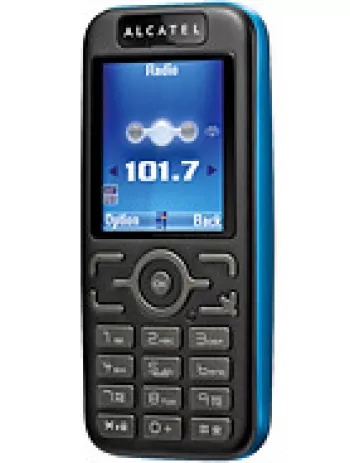
Network and Connectivity
The Alcatel Pixi 4 (5) supports GSM and HSPA network technology. It operates on 2G bands (GSM 850 / 900 / 1800 / 1900) and 3G bands (HSDPA 850 / 900 / 1900 / 2100). Users can experience internet speeds via HSPA technology, although the device is not equipped with LTE capabilities, which are standard in more recent smartphones.
Design and Build
This device was announced and released in June 2016. The body dimensions are 140.7 x 72.7 x 9.5 mm and it weighs 148 grams. It features a relatively compact design with a Micro-SIM card slot. Though not the sleekest in the market, its design was quite typical of smartphones from its release period, offering solid build quality for its price range.
Display
The Alcatel Pixi 4 (5) is equipped with a 5.0 inches IPS LCD display. With a resolution of 480 x 854 pixels, it yields a ~196 ppi pixel density. While the display specifications may not be groundbreaking, they offer satisfactory visibility for everyday tasks and basic media consumption. The screen-to-body ratio is approximately 67.3%, leaving noticeable bezels which might look outdated by current standards.
Platform and Performance
Running on Android 6.0 Marshmallow, the Alcatel Pixi 4 (5) provides a user-friendly interface with access to a plethora of applications through the Google Play Store. The device is powered by a Quad-core 1.3 GHz CPU, which ensures smooth performance for basic tasks such as browsing, messaging, and light app usage. However, with 1GB RAM, the device might struggle with multitasking and running updated or resource-intensive applications.
Storage
This model comes with an internal storage of 8GB, which might not suffice for users who actively download apps, games, or media. Fortunately, the storage is expandable via a microSDHC dedicated slot, allowing users to add more storage space to suit their needs.
Camera
The main camera is an 8 MP shooter, equipped with autofocus and features like LED flash and HDR for enhanced photo quality in conducive lighting conditions. It is capable of recording videos in 720p at 30fps. The 5 MP front camera also comes with an LED flash, allowing for decent selfies and video calls, particularly in well-lit environments.
Sound
The phone features a loudspeaker and a 3.5mm audio jack, catering to users’ audio needs for media playback and calls. This traditional jack is also compatible with a wide range of ear and headphones, enhancing the audio output experience.
Connectivity
When it comes to connectivity, the device supports Wi-Fi 802.11 b/g/n with Wi-Fi Direct capabilities, Bluetooth 4.0 with A2DP, and microUSB 2.0. GPS functionality is included, although NFC is not supported. It also has an FM radio receiver, catering to users who enjoy radio broadcasts.
Sensors
The Alcatel Pixi 4 (5) includes basic sensors, such as an accelerometer, which plays a role in various device functionalities like screen rotation and step counting. However, the device lacks some more advanced sensors like fingerprint readers or gyro sensors.
Battery Life
The device is powered by a removable Li-Ion 2000 mAh battery. Although not particularly large by today’s standards, it offers enough power for moderate usage throughout the day. The fact that it is removable can be beneficial for users who might want to swap the battery themselves if it degrades over time.
Miscellaneous Features
The Alcatel Pixi 4 (5) primarily comes in black, with several model variations including 5010D, 5010X, and others, conforming to regional and connectivity needs. It was initially priced at approximately 60 EUR, positioning it within the budget-friendly sector of the smartphone market.
Conclusion
While the Alcatel Pixi 4 (5) may not stand out in the highly competitive smartphone market today, it does offer basic functionality sufficient for users who prioritize telecommunications and basic app usage over cutting-edge technology. Its affordable entry-level price, combined with essential features, make it a worthy consideration for first-time smartphone users or those looking to keep a simple secondary phone.
Key Features of Alcatel Pixi 4 (5)
- IPS LCD Display: 5.0 inches with a resolution of 480 x 854 pixels.
- Processor: Quad-core 1.3 GHz providing adequate performance for daily tasks.
- Operating System: Android 6.0 (Marshmallow) for a user-friendly interface.
- Expandable Storage: microSDHC card slot available.
- Main Camera: 8 MP with LED flash and HDR support.
- Front Camera: 5 MP with LED flash for better selfies.
- Lightweight Design: Weighs 148 grams, making it easy to carry.
- Affordable Price: Approximately 60 EUR, providing good value for budget-conscious users.
- FM Radio: Built-in FM radio for entertainment on the go.
- Battery: Removable Li-Ion 2000 mAh battery for easy replacement.
- Connectivity: Supports Wi-Fi, Bluetooth 4.0, GPS, and microUSB 2.0.
Drawbacks of Alcatel Pixi 4 (5)
- Low screen resolution of 480 x 854 pixels, resulting in a relatively low pixel density (~196 ppi).
- Limited internal storage of 8GB, which may not be sufficient for many users.
- Only 1GB of RAM, which may lead to performance issues with more demanding apps and multitasking.
- Outdated Android version (Android 6.0 Marshmallow), lacking newer features and security updates.
- No NFC support, limiting contactless payment capabilities.
- Basic 8 MP main camera and 5 MP selfie camera, which may not provide high-quality photos in low light conditions.
- Small 2000 mAh battery capacity, which might not last a full day with heavy usage.
- Lack of LTE support, limiting internet speed options.
- No fingerprint sensor or advanced sensors, providing minimal security options.
- Discontinued status, meaning no official support or updates.

View Also
More Phones
All Rights Reserved +14268 Phones © Mobilawy 2025

























